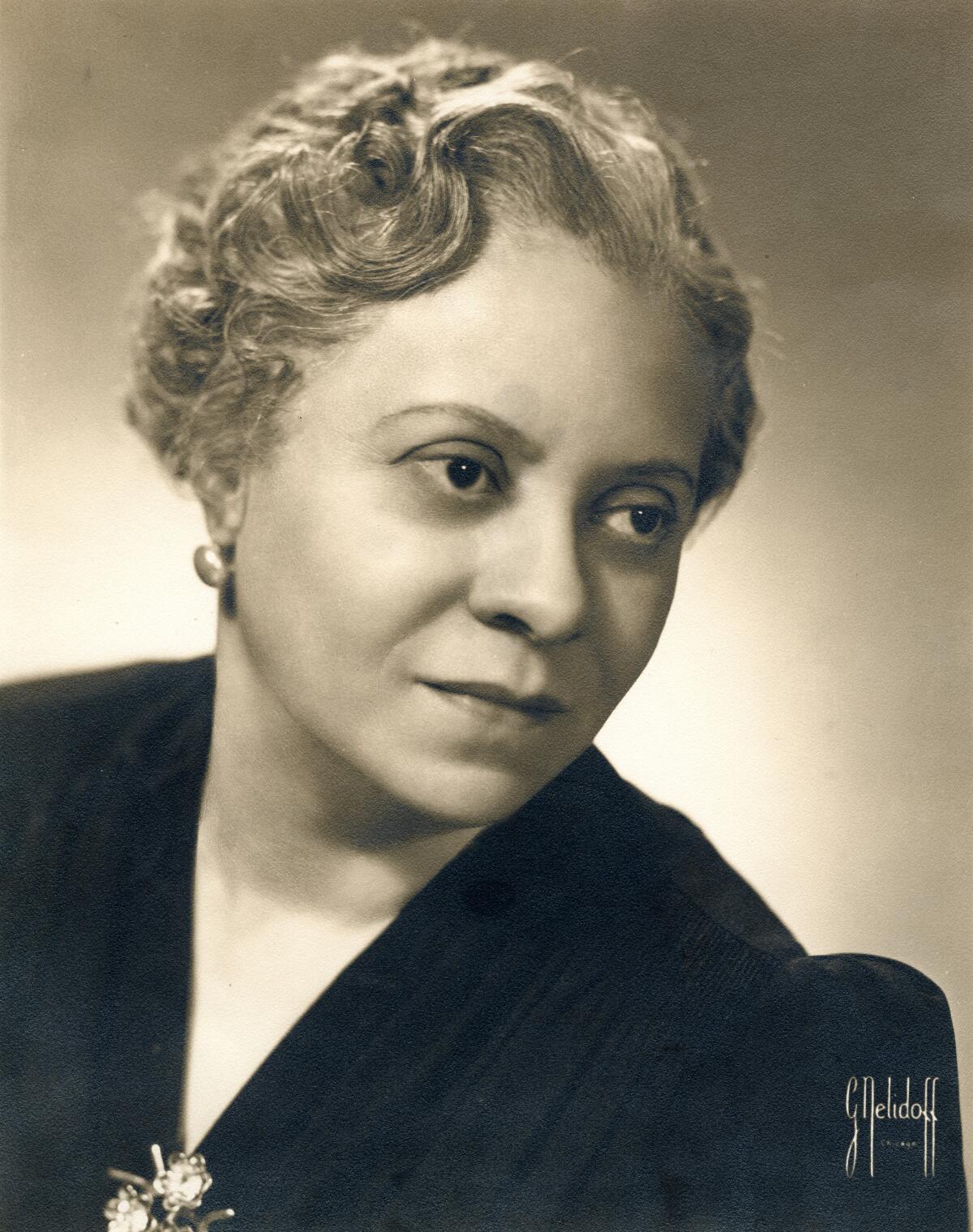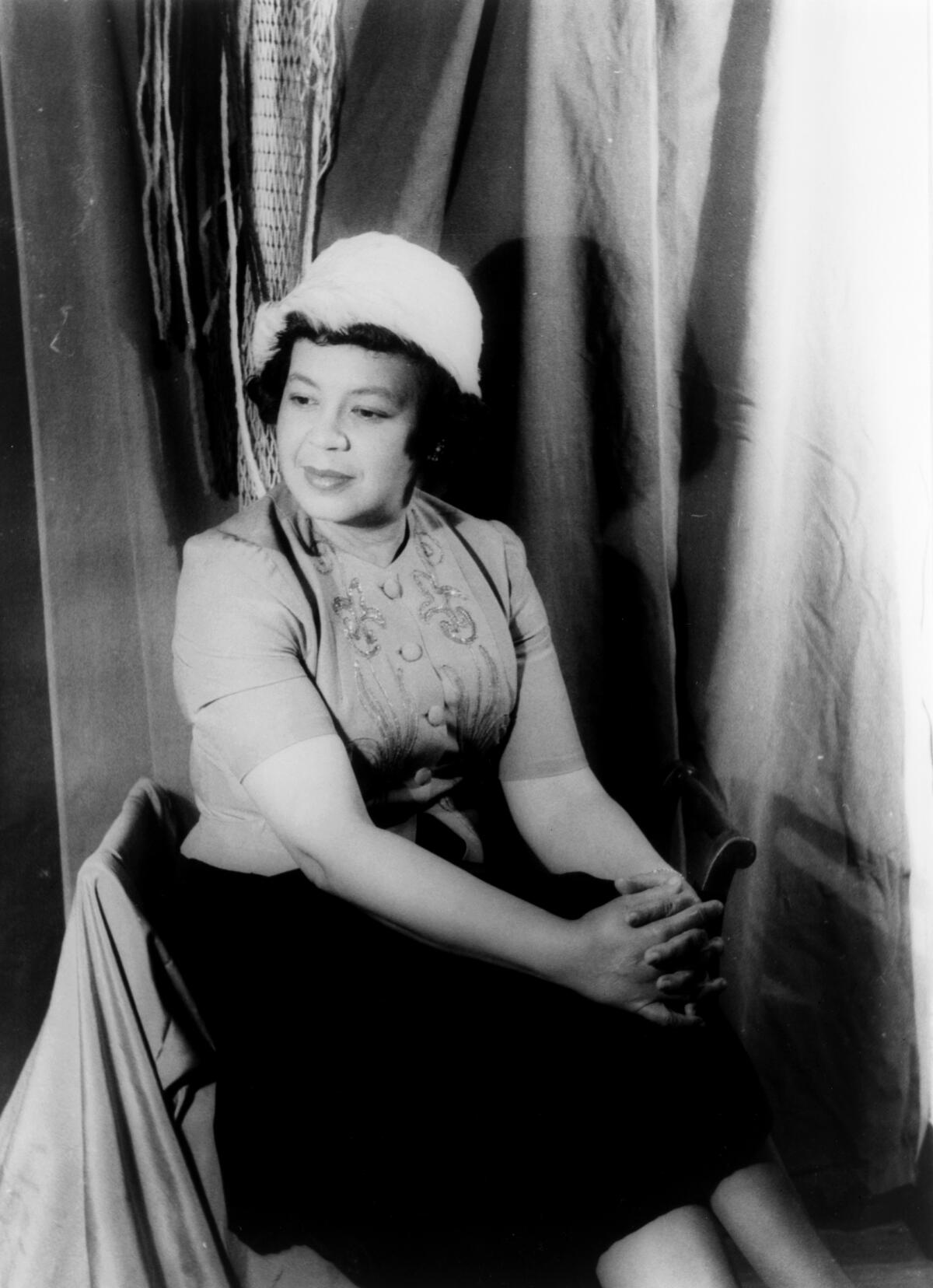Everyone is ‘rediscovering’ Florence Price. Leave it to the L.A. Phil to reveal her essence

With a significant suddenness, Florence Price has become recognized as a major American composer. Her First Symphony was given its premiere by the Chicago Symphony in 1933. As a piece composed by a Black woman, it was widely acclaimed as a pioneering achievement. And then it was promptly shelved. Her Third Symphony had its first performance in Detroit in 1940. It was acclaimed by First Lady Eleanor Roosevelt, who was in the audience. And then it was promptly shelved.
Only within the last year or two has Price — remembered after her death (if at all) for her arrangements of spirituals — begun to enter the canon. She has been championed by Yannick Nézet-Séguin, who recorded Price’s First and Third symphonies last year with the Philadelphia Orchestra and took them on tour to prestigious festivals in Europe this last summer. Last month, Nézet-Séguin and his Philadelphians opened the Carnegie Hall fall season with Price’s Third; five days later and five blocks away, Jaap van Zweden led the New York Philharmonic in her Fourth Symphony as part of the celebratory opening concerts of the renovated David Geffen Hall.
Earlier this month, the Los Angeles Philharmonic capped its two main orchestral programs in its Rock My Soul Festival with Price’s Third. The ongoing festival, curated by soprano Julia Bullock, is far reaching. The spiritual from which the festival takes its title has been famously represented in jazz by Louis Armstrong, in pop music by Elvis, in dance by Alvin Ailey and in folk music by Peter, Paul and Mary. Bullock wrote in her curatorial statement that, for her, soul rocking is a call for self-expression, engagement with everything within and around you and finding enjoyment in the process.
But the festival’s main two L.A. Phil programs were primarily about discovery, that of Price and her relationship with Margaret Bonds, another neglected Black composer. They are seen as forgotten forerunners of contemporary musicians including Chaka Khan, Rhiannon Giddens and Meshell Ndegeocello, each given an evening in the festival.

The L.A. Phil might seem a little late to the Price party, particularly given the many performances the Third Symphony is receiving. (The Chicago Symphony, for instance, played it in May with Riccardo Muti.) It is a score of great beauty, considerable grace and rapt expression. Its substance comes from the use of spirituals and African American dance in a symphonic manner, modeled after Dvorák’s example in his “New World” Symphony. Not to be moved by the score and its composer, who rose above the racism and misogyny in classical music, requires a cold heart.
Yet this is neither a conventionally well-made nor innovative symphony. Rather, it’s one that places the African American experience into an outdated European mold. Does that really matter, given all that the symphony and Price represent? Listening to the Philadelphia Orchestra’s lush recording, I thought, sadly, it does matter. The L.A. Phil performance, conducted with a vivid, clear-eyed edge by Jeri Lynne Johnson and put in the context of Bullock’s festival, changed my mind.
The first orchestral concert in the festival focused on songs and short pieces for piano, organ and orchestra by Price and Bonds. It was missing a key component, namely Bullock herself. The soprano oversaw the programming but had to bow out of appearing at Disney after giving birth to her first child in Munich shortly before the beginning of the festival.
This meant not only the loss of Bullock’s star power but also a considerable revamping of the programming, including substitute performers and the cancellation of a Green Umbrella concert. The fact that Bullock has a uniquely communicative presence may also account for the spotty attendance at the concerts I heard. We were left with a few, and in one instance irrelevant, video introductions by Bullock.
But we were also left with a good deal of Bullock’s original vision, particularly in the first program that explored the relationship between Price and Bonds and their crucial role in helping to make Chicago a center of Black musical renaissance, in conjunction with and parallel to the contemporary Harlem Renaissance. Price (1887-1953) served as a mentor and inspiration for Bonds (1913-1972) in attempting to include the Black musical experience in the more traditional classical music.
Both excelled above all else in their songs, leaving behind a major contribution to the American art song literature that has yet to be fully discovered let alone appreciated. That was at the heart of the first L.A. Phil program.
Indeed, Price’s art songs and smaller keyboard works may well come to matter as much if not more than her symphonies and concertos that are getting so much attention. The selection that the electrifying soprano Michelle Bradley and rich-voiced mezzo-soprano Jasmin White offered were humorous, darkly poetic and, in the spirituals, utterly stirring. Equally important too are Price’s solo piano miniatures, which were rousingly played by Michelle Cann and which revealed a composer with a flair for character study. Her style took in hot jazz, warm Romanticism, cool Modernism and climate-variable Impressionism, often in a matter of a minute of two. The organ works — a churchy “Retrospection” and Bachian Organ Suite No. 1 expertly played by Nathaniel Gumbs — revealed yet another little-heard side of Price.
There was less of Bonds, who has yet to be noticed as much as Price but who surely will be. She was more political and more contemporary than Price. Her gripping songs to poems by Langston Hughes are a high point. There were also selections from her vivid civil rights orchestral tone poem, “Montgomery Variations,” which, like much of Price’s music, has been only recently rediscovered. Let her big choral pieces be next on the agenda.
There is also the touchier question of how to address the legacy of both composers. The Price and Bonds songs were given respectful new orchestral arrangements, partly robbing them of immediacy. For that program, Lidiya Yankovskaya was the evening’s respectful conductor.
The second program began with the world premiere of an eight-minute bassoon concertino, “Opus Serena,” by Valerie Coleman, and Courtney Bryan’s “Sanctum,” from 2015. Both are programmatic scores by a new generation of prominent Black female composers.
Coleman’s tribute to Serena Williams features wonderful virtuoso bassoon writing, played with flair by Monica Ellis, and amusing tennis sound effects. “Sanctum,” Bryan’s first orchestral score, reflects on police brutality, the emotive orchestral writing overshadowed by horrifying recordings of beatings. The orchestral works were then followed by an appearance of the soul singer Danielle Ponder, who performed two of her songs and a powerful rendition of a spiritual accompanied by the L.A. Phil and pianist Avis Reese.
This left the impression of Coleman, Bryan and Ponder being ancestors of Price, but also having moved on. It took Johnson, who conducted the program, to address the tradition. In the Upbeat Live talk, the conductor noted Price’s lack of skill in holding a longer orchestral piece together. She had one really good idea after another but needed the experience of performing that wasn’t available to a Black female composer at the time.
As a conductor, Johnson said, her instinct was to fix things in the orchestral scores that she thought needed a little fixing. As a Black woman, though, her instinct was not to obstruct Price’s voice. You could say that was also the problem with Mussorgsky, and over time we’ve come to prefer the original versions, their authenticity more meaningful than their faults.
Johnson’s Price wound up being like that too, and exceptionally effective. Gone were all the niceties of other orchestral Price performances. Gone was the condescending notion that Price needs to fit in. She doesn’t, and Johnson, who is a stunning, rhythmically vital conductor, forced us to hear what sounded like the real voice of Price.
This did not, then, sound like a European symphony. The third movement, based on the juba, the African American dance replete with stomping and slapping the arms, was a juba, fast and a little erratic, not symphonically suave. The symphony’s spirituals, and its bits and pieces of Dvorák, were just that, not an ersatz “New World.”
Price’s wasn’t a “new world,” it was her world, full of old prejudices but maybe new promise. That’s what she needed to say, and we needed — and still do — to hear.
More to Read
The biggest entertainment stories
Get our big stories about Hollywood, film, television, music, arts, culture and more right in your inbox as soon as they publish.
You may occasionally receive promotional content from the Los Angeles Times.











